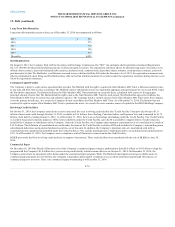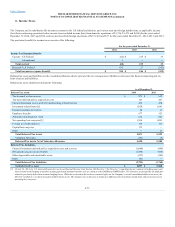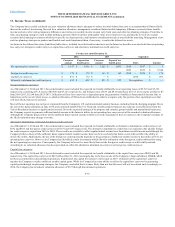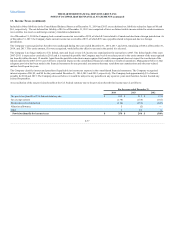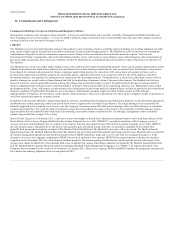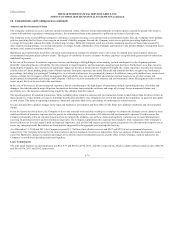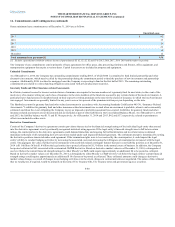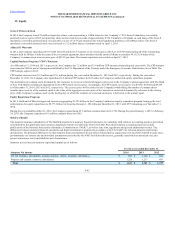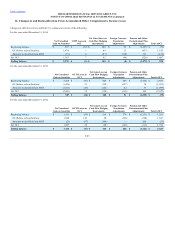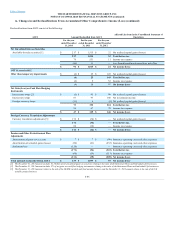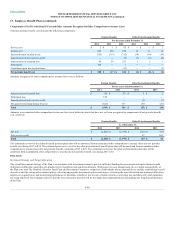The Hartford 2014 Annual Report Download - page 219
Download and view the complete annual report
Please find page 219 of the 2014 The Hartford annual report below. You can navigate through the pages in the report by either clicking on the pages listed below, or by using the keyword search tool below to find specific information within the annual report.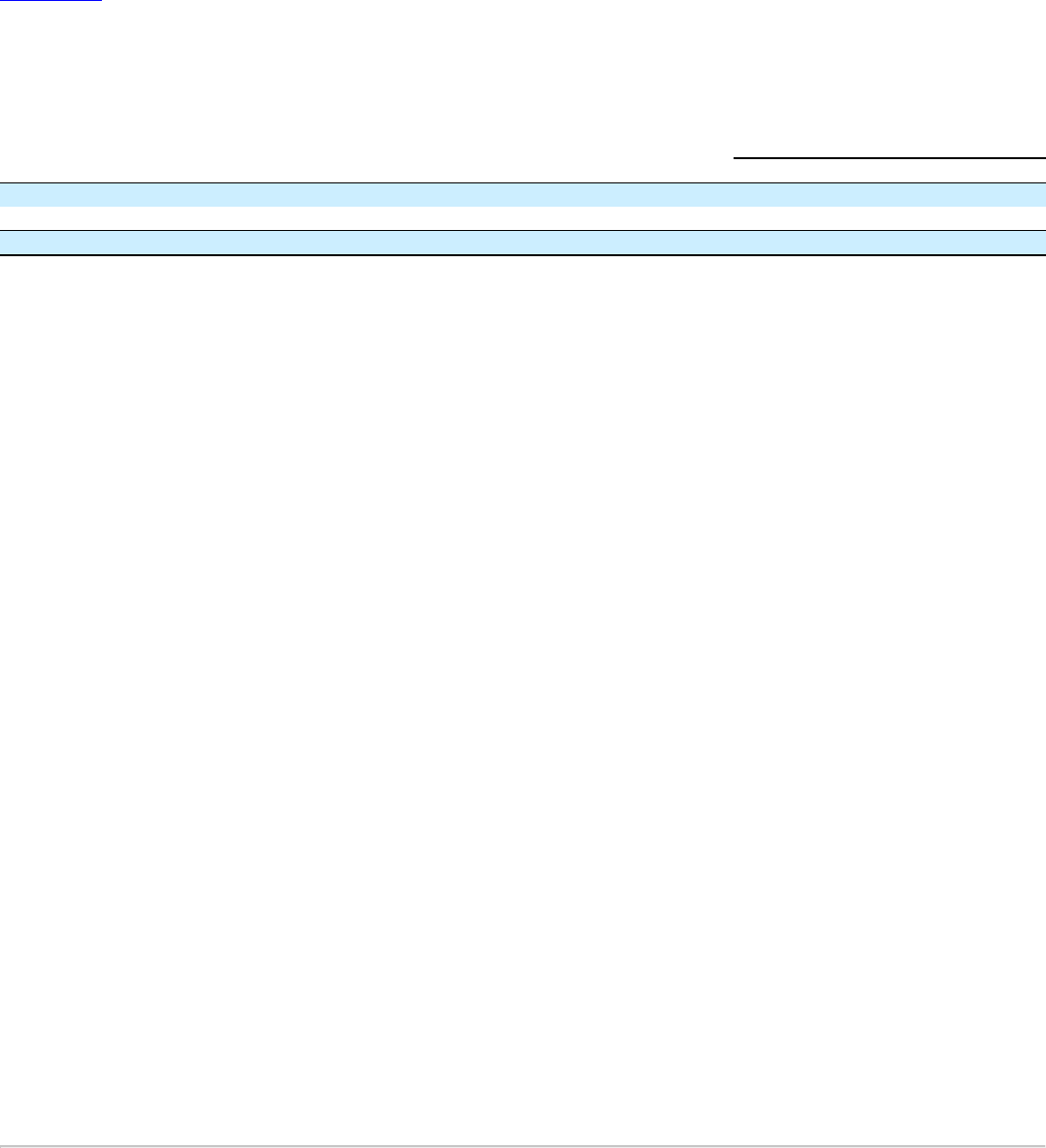
Table of Contents
U.S. life insurance subsidiaries, includes domestic captive insurance subsidiaries for 2013 $ 7,157 $ 6,639
Property and casualty insurance subsidiaries 8,069 8,022
The Company also held regulatory capital and surplus for its former operations in Japan until the sale of those operations on June 30, 2014. Under the
accounting practices and procedures governed by Japanese regulatory authorities, the Company’s statutory capital and surplus for its Japan operations was
$1.2 billion, as of December 31, 2013.
Regulatory Capital Requirements
The Company's U.S. insurance companies' states of domicile impose risk-based capital (“RBC”) requirements. The requirements provide a means of
measuring the minimum amount of statutory capital and surplus (referred to collectively as "capital") appropriate for an insurance company to support its
overall business operations based on its size and risk profile. Regulatory compliance is determined by a ratio of a company's total adjusted capital (“TAC”) to
its authorized control level RBC (“ACL RBC”). Companies below specific trigger points or ratios are classified within certain levels, each of which requires
specified corrective action. The minimum level of TAC before corrective action commences (“Company Action Level”) is two times the ACL RBC. The
adequacy of a company's capital is determined by the ratio of a company's TAC to its Company Action Level, known as the "RBC ratio". All of the
Company's operating insurance subsidiaries had RBC ratios in excess of the minimum levels required by the applicable insurance regulations. On an
aggregate basis, the Company's U.S. property and casualty insurance companies' RBC ratio was in excess of 200% of its Company Action Level as of
December 31, 2014 and 2013. The RBC ratios for the Company's principal life insurance operating subsidiaries were all in excess of 425% of their Company
Action Levels as of December 31, 2014 and 2013. The reporting of RBC ratios is not intended for the purpose of ranking any insurance company, or for use
in connection with any marketing, advertising, or promotional activities.
Similar to the RBC ratios that are employed by U.S. insurance regulators, regulatory authorities in the international jurisdictions in which the Company
operates generally establish minimum solvency requirements for insurance companies. All of the Company's international insurance subsidiaries have
solvency margins in excess of the minimum levels required by the applicable regulatory authorities.
Dividend Restrictions
Dividends to the HFSG Holding Company from its insurance subsidiaries are restricted. The payment of dividends by Connecticut-domiciled insurers is
limited under the insurance holding company laws of Connecticut. These laws require notice to and approval by the state insurance commissioner for the
declaration or payment of any dividend, which, together with other dividends or distributions made within the preceding twelve months, exceeds the greater
of (i) 10% of the insurer’s policyholder surplus as of December 31 of the preceding year or (ii) net income (or net gain from operations, if such company is a
life insurance company) for the twelve-month period ending on the thirty-first day of December last preceding, in each case determined under statutory
insurance accounting principles. In addition, if any dividend of a Connecticut-domiciled insurer exceeds the insurer’s earned surplus, it requires the prior
approval of the Connecticut Insurance Commissioner. The insurance holding company laws of the other jurisdictions in which The Hartford’s insurance
subsidiaries are incorporated (or deemed commercially domiciled) generally contain similar (although in certain instances somewhat more restrictive)
limitations on the payment of dividends. Dividends paid to HFSG Holding Company by its life insurance subsidiaries are further dependent on cash
requirements of HLI and other factors. In addition to statutory limitations on paying dividends, the Company also takes other items into consideration when
determining dividends from subsidiaries. These considerations include, but are not limited to expected earnings and capitalization of the subsidiary,
regulatory capital requirements and liquidity requirements of the individual operating company.
In 2014, HFSG Holding Company received approximately $2.5 billion in dividends from its property-casualty insurance subsidiaries through a series of
transactions affecting the property and casualty and life insurance subsidiaries, including $1.4 billion of extraordinary dividends. As a result of the
extraordinary dividend received in July 2014, Hartford Fire has no remaining ordinary dividend capacity for the twelve months following. As such, the
Company does not anticipate taking any dividends from Hartford Fire until the third quarter of 2015. The dividends received from its property-casualty
subsidiaries included $97 related to funding interest payments on an intercompany note between Hartford Holdings, Inc. (“HHI”) and Hartford Fire Insurance
Company.
In 2015, the Company’s property-casualty insurance subsidiaries are permitted to pay up to a maximum of approximately $1.5 billion in dividends to HFSG
Holding Company without prior approval from the applicable insurance commissioner. In 2015, HFSG Holding Company anticipates receiving
approximately $600 in dividends from its property-casualty insurance subsidiaries, net of any dividends paid by its property-casualty subsidiaries to fund
interest payments on an intercompany note between HHI and Hartford Fire Insurance Company.
F-83



